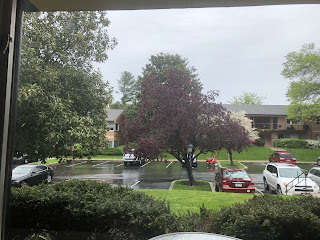Published today (Nov. 4, 2025) on clonline: https://us.clonline.org/news/stories/2025/11/04/the-grace-of-grace-house
THE GRACE OF GRACE HOUSE
Juliet, inspired to share something beautiful with her children, relaunched a charitable work at a local assisted living facility, inviting young families and other friends within the community to join.When my son Zebulun was turning one, I realized that what I wanted to offer him was something much bigger and more beautiful than material gifts. I also didn't want to train him to carelessly open gift after gift without a sense of joy and gratitude. Around Christmas and birthdays, I worry that the gift-giving culture can teach us to be greedy and inattentive to what is in front of us. I wanted to give Zebulun all the beauty, truth and goodness the world contains! Of course it was not practical to offer him all of Heaven on Earth. Instead, what could I offer him to allow him to glimpse Heaven on Earth? Where could he encounter something good and true for his life?
These questions invited me to recall when, as a young high school teacher, I led GS students with Tom to visit an assisted living home where we chatted and sang with the residents. At first I was hesitant since I had no prior experience of bringing toddlers together with elderly people who were strangers. Nonetheless, I reached out to Grace House assisted living home and learned that a few months before, their strict Covid-19 visiting restrictions had been lifted, and they would be glad for visitors! I was very grateful for the opportunity to return and share time with the residents. We invited a handful of Zebulun's toddler friends and their families, as well as Tom to accompany us with guitar tunes. We had a lovely time with the residents. I realized that I wanted to keep educating my son, as well as my daughter Marianne who was born the following year, how to share their lives with the men and women at Grace House, as well as our friends who joined us there.
Now over two years after our post-Covid return to Grace House, we are a large group of friends and families with young children who visit the Grace House residents twice a month, for an hour each visit. We sing songs and chat a bit with the residents while the children toss balloons with the residents and run around being silly. That is literally it. What is so impressive is the simplicity of the moment. We are not building new homes for the homeless; nor making sandwiches, cooking for, or feeding the hungry. We are spending our time with elderly residents. And amazingly, this is worth writing about and sharing with others.
Giussani articulates that "The supreme law of our being is to share in the being of others, to live in communion" (The Meaning of Charitable Work). What a far cry this is from the commercial culture that imposes its materialism on us with the absurd claims that products will satisfy us. Instead, those of us who visit Grace House are experiencing a joy in sharing our being, which promises more than material comforts. The taste of a goodness we don't often sense surfaces in our hearts and consciousness. We can also see the joy our presence brings to the faces of the elderly. This joy is amazing because, rather than being some sort of transaction, it seems to well up in the very place of communion during our visits, and is then received by all present!
It is a complete mystery because of how very little we do, make or accomplish in the process of being present to the Grace House residents. Every time we leave, the residents express their profound gladness for our visit. They are so deeply overjoyed that it really makes you stop and wonder what has happened. Something that clearly none of us had predicted, planned, or produced has happened. Perhaps God– something divine, something joyful– touches these men and women through us. Somehow, it seems, God is choosing to touch peoples' hearts through our simple "yes" to the invitation to live and pass our time in communion with others.
There is also a voice in culture-- one that is loud in my own heart, though I realize it is false– convincing us that it is how much we do, make, or get done during the day that gives meaning to our lives. As a stay at home mother, this lie for me is that if I haven't prepared a particular dinner, started the laundry, cleaned up certain messes or invited friends over frequently enough for a shared meal, then my life has been for nothing. The evil one, under the guise of the dominant culture, tempts me to think that time spent "just being" with others is wasteful and useless. In contrast, the powerful Christian concept of charity, which puts us in relationship with others, is dramatically true and attractively beautiful. We aren't wasting time because we are imitating how Christ spent His time. In those mysterious moments with the Grace House residents, alongside our friends, our children, and our children's friends, our hearts begin to open up. They open up to begin to identify the gift that the other person is, the gift that I am to myself, and the gift that is our community of friends. These are impossible, undeserved gifts– quite different than a pile of material gifts– but ones that put us on an exciting path of life, full of epic surprises and encounters with the tenderness of the great Author of Love. In our charitable work, God is so concretely faithful to his promise of removing our hearts of stone and giving us hearts of flesh (Ez 36:26).
I personally have been transformed by charitable work at Grace House because I spend time with my children differently. Time spent reading, playing, teaching or being silly with them comprise, in the grand scheme of life, the most joyful, deeply memorable and outright good moments of my life. Those moments are educated by our charitable work. I need to go to Grace House regularly to learn and be reminded often of who I am and who I want to be. I stand in wonder at the incredible mystery of how God needs us as an instrument to bring His joyful presence into the lives of others.
Juliet, Derwood MD





